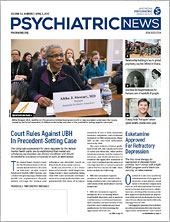U.S. counties with higher 10-year unemployment rates and greater shortages of mental health professionals have the highest rates of neonatal abstinence syndrome (NAS), a study published in JAMA has found. Neonatal abstinence syndrome occurs when newborns experience withdrawal from drugs they were exposed to in the womb.
Stephen W. Patrick, M.D., M.P.H., M.S., an assistant professor of pediatrics and health policy in the Department of Pediatrics at Vanderbilt University School of Medicine, and colleagues studied outcome data from more than 6.3 million births in eight states from 2009 to 2015. These states were Florida, Kentucky, Massachusetts, Michigan, New York, North Carolina, Tennessee, and Washington. They also analyzed economic data from these states from 2000 to 2015, including unemployment rates, designation as a health professional shortage area, and designation as a mental health clinician shortage area.
The researchers found that between 2009 and 2015 the overall median rate of neonatal abstinence syndrome rose from 3.2 per 1,000 hospital births to 14.5 per 1,000 hospital births. However, neonatal abstinence syndrome clustered in areas with high 10-year unemployment rates, such as rural Appalachia, southeastern Massachusetts, northern Michigan, and southwestern Washington. Per 1,000 hospital births, there were 20.1 cases of neonatal abstinence syndrome in counties in the highest quartile of unemployment compared with 7.8 cases of neonatal abstinence syndrome in counties in the lowest quartile of unemployment.
Study co-author Bradley D. Stein, M.D., Ph.D., a senior physician policy researcher at RAND Corporation, noted how long-term unemployment chips away at social support, particularly in rural areas.
“If friends and family are unable to find jobs, they often move away, so [those who remain] don’t have social support that can protect against drug use,” Stein told Psychiatric News.
Stein called for economic development and other social support programs that can reinvigorate rural communities where jobs have disappeared.
“Oftentimes we don’t think of these things as health interventions, but those types of investments may pay off in the improved health of a community. We can’t ignore that the opioid crisis occurs in a social context. Health care infrastructure and societal factors both matter,” Stein said.
Although the researchers did not find a link between neonatal abstinence syndrome rates and shortages of primary care professionals, they did find an association between mental health clinician shortages and neonatal abstinence syndrome. For every 1,000 hospital births, there were 14 cases of NAS in counties with a shortage of mental health clinicians, compared with 10.6 in counties without shortages. Here, the county-to-county differences in NAS rates were most pronounced in urban areas.
“While we saw the impact of insufficient mental health providers in urban areas, it also likely matters in rural communities,” Stein explained. “But there may be so few rural communities that have adequate mental health providers that we were unable to detect a statistical difference [from county to county] there.”
The increase in neonatal abstinence syndrome rates across the board signals a gap in the care of pregnant women that psychiatrists can help fill, said Stein.
“Psychiatrists who are treating pregnant women for anxiety, depression, or another mental health condition should realize that these women are at higher risk for using and misusing opioids. The risk is low, but it’s there, and it should become part of routine assessment and practice.”
This study was supported by funding from the National Institute for Healthcare Management Foundation, the National Institute on Drug Abuse, and RAND Health Care. ■
“Association Among County-Level Economic Factors, Clinician Supply, Metropolitan or Rural Location, and Neonatal Abstinence Syndrome” can be accessed
here.
